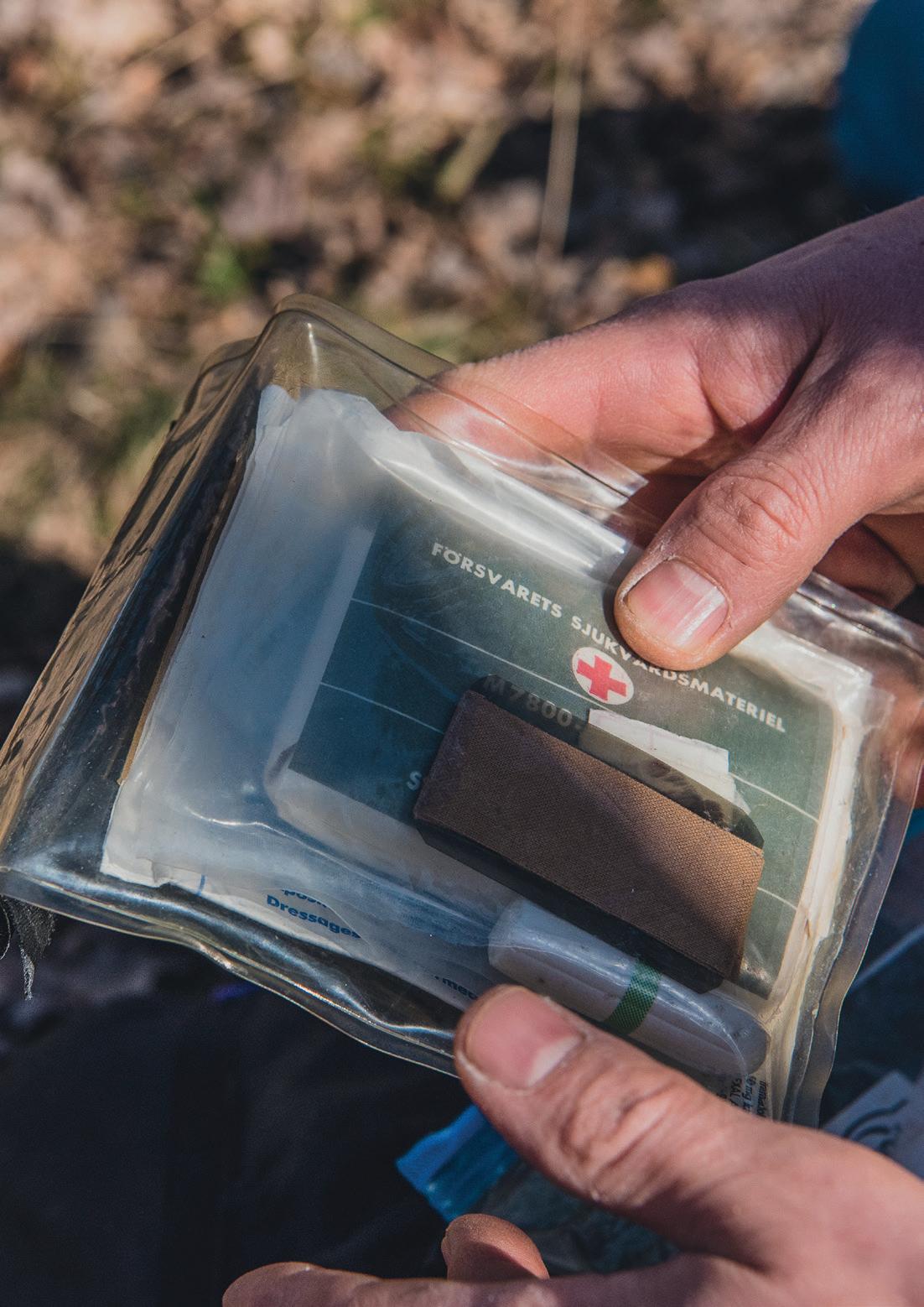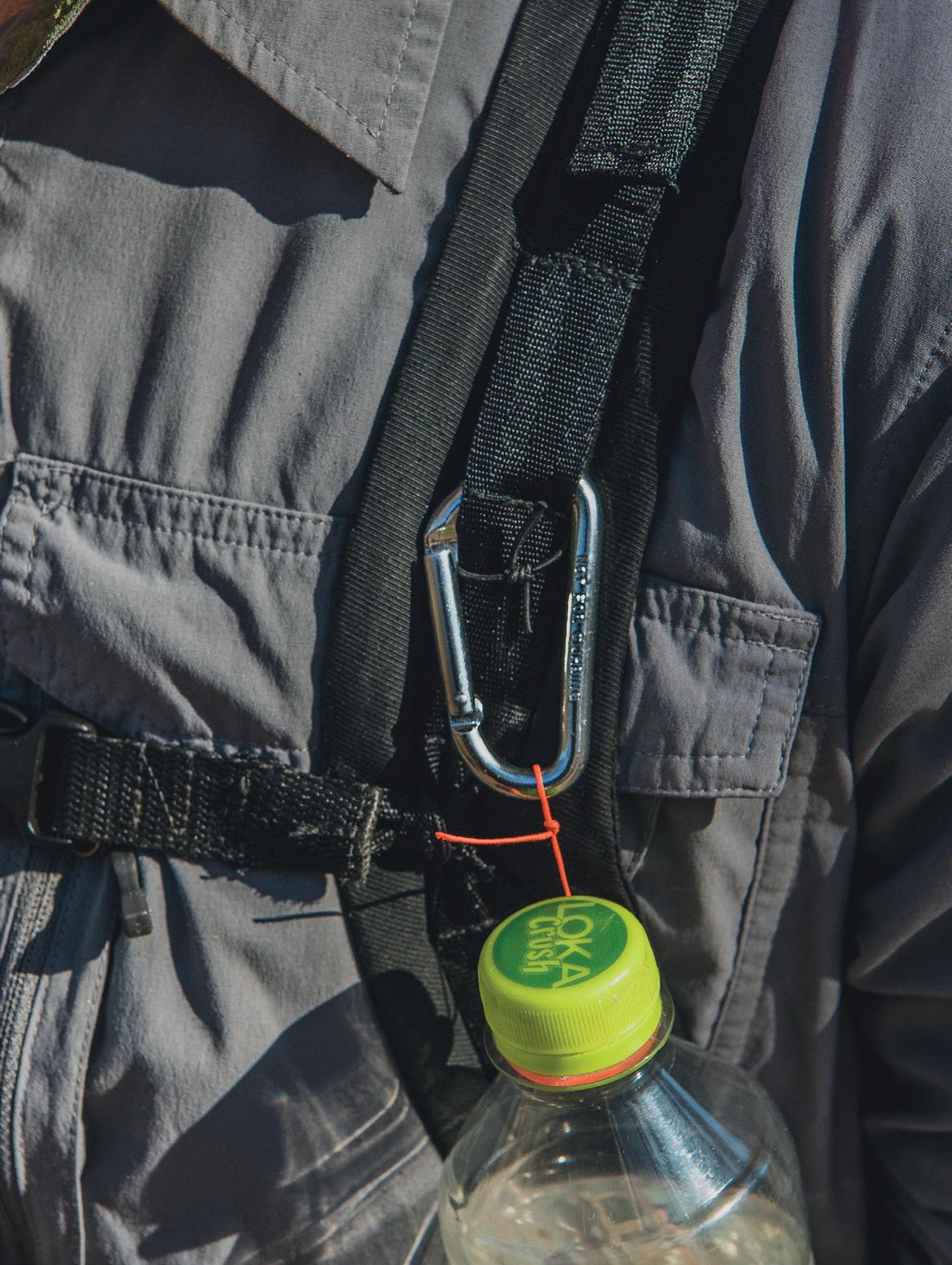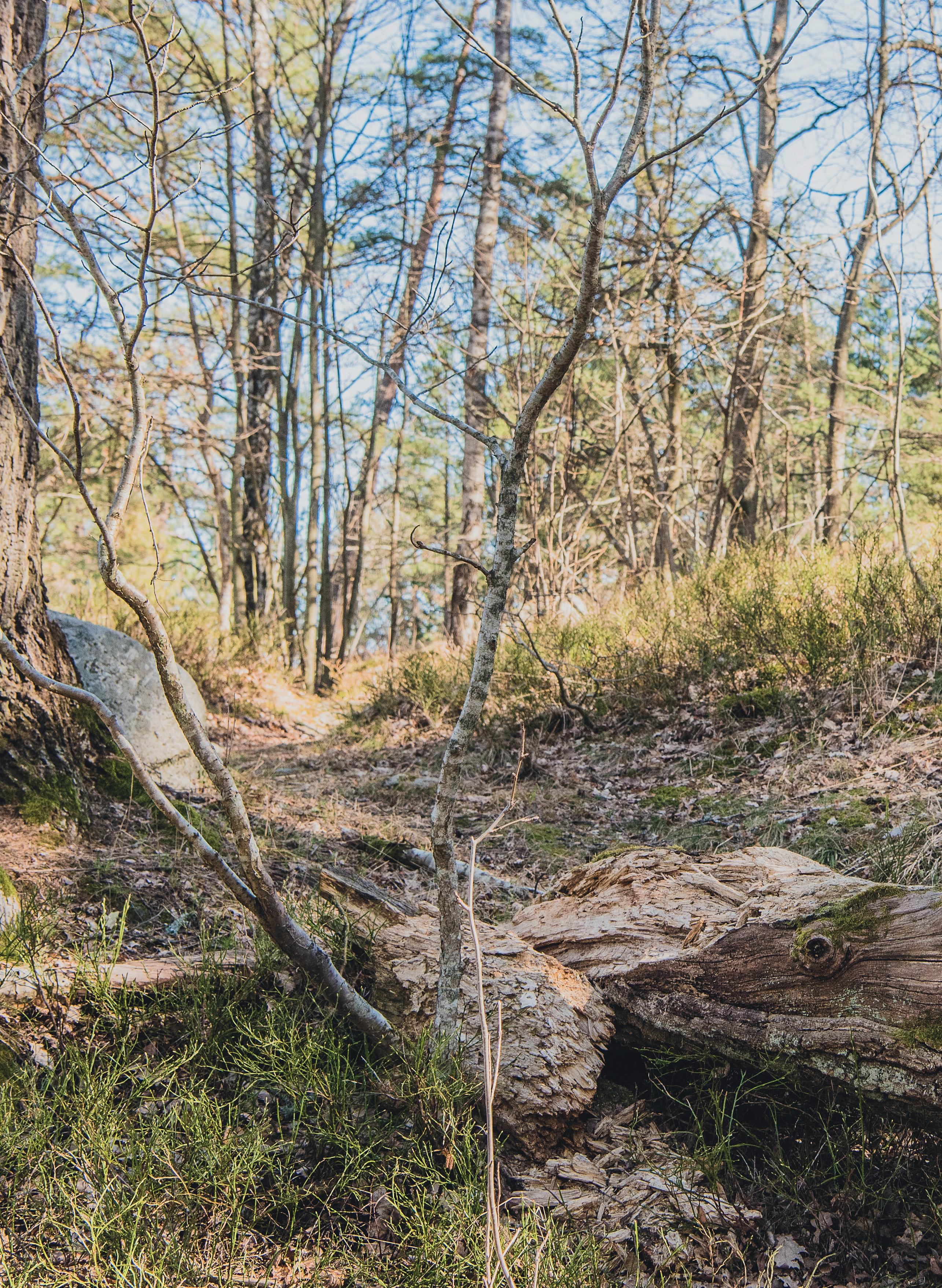
6 minute read
AWeightOffYourShoulders
A WEIGHT OFF YOURSHOULDERS
Text: Olof Lange / Photo: Emelie Voltaire
Advertisement
A long day's hike is at its end. You've taken hundreds of steps, and now your legs and back are crying out for a rest. After a long uphill finish, the campsite is finally in sight, down by the stream. Taking your backpack off and resting your weary feet is a glorious feeling.
Now picture the same scenario with a backpack that's half the weight and comfortable shoes that weigh grams instead of kilos. Doesn't that sound good? Now, we're not suggesting you need to go and replace all your equipment, obsessing over every gram, but a bit of knowledge and a few smart hacks can lighten the load for anyone.
Heavyweight terminology in the world of lightweight hiking
Base weight is all your gear, including your backpack. Clothings and consumables like food and fuel aren't included.
The big three are the parts of equipment that weigh the most: your shelter, sleep system and backpack. By reducing the weight of these items, you can quickly shave several kilos off your back. It comes with a price tag though: the lightest, high-quality equipment is rather costly.
Lightweight & ultralight refers to your base
weight, and there are a few different definitions in actual grams. A lightweight pack with moderate comfort can be achieved by relinquishing all but the most necessary items and choosing the lightest options. An ultralight pack requires more knowledge and bigger sacrifices – but lets you hit the trail with just a few kilos on your back.
A rolled up sleeping pad in your backpack provides stability without a frame

Small, simple hacks can go a long way Weigh your equipment and see where you can save grams
Only bring the amount you need on the trip


The thought that counts
If you go into the wild to hike rather than camp, abandon the camping gadgets in favour of weight savings on the trail. Every step will be lighter – and even on the shortest of trips, these weight savings really make a difference to how agile you feel.
Truly lightening your load is just as much about your mindset and experience as it is about featherweight gear. One such mindset hack is that all the items in your pack should be multifunctional. Trekking poles also work as poles for a tarp or Canadian tent. Dental floss works as sewing thread, and one container can be a pot, bowl and mug. As well as making it lighter, this also simplifies your pack.
Think in systems
To optimise equipment, it's good practice to think of how items can work together to provide the function and comfort you aim for, at the lowest possible weight.
A sleep system is what you sleep in, and on, during the night. An insulated sleeping mat, sleeping bag liner and a warm jacket can complement a lighter sleeping bag on a cold excursion. If it's only your feet that get cold at night, then a pair of down socks are lighter and less expensive than a warmer sleeping bag.
Just like a tent, a much lighter tarp can work together with a bivvy bag or a hammock to provide shelter from rain and wind. It also brings you closer to nature. Assess your needs first, then your gear.

Weigh & list all your gear
The kitchen scale is your friend and maybe the most useful tool for lightening your load, even if it never leaves the house. There are plenty of spreadsheets and other resources on the internet to utilise.
To see how much all those little bits and pieces really weigh will probably be an eye-opener. It's satisfying to follow the process and the overview makes it easier to see where there's weight to be saved. The very lightest are, of course, the items you don't bring at all!
Preciousdrops
Water bottles often tempt us with wide openings, carabiner fastenings or promises of (their own) eternal life. But the lightest and most readily available are the bottles at the supermarket, still or sparkling according to taste. They're surprisingly tough and can be recycled when they do wear out. Sports caps and wide openings are also options here as well.
Don't carry more than you need, learn how to find water and plan routes and stops with streams and wells. Guidebooks and articles are your best friend here.
Like other athletes, space explorers, and alchemists, real weight-weenies trim and modify their gear. The most sought after element is 'Drillium', which appears when equipment is cut, ground, or drilled full of holes. After all, what weighs less than a strap that's not there or a toothbrush handle that's been cut off?
Smallstepstowardszero
Cutting a toothbrush might seem silly, but every gram counts in the end, so cut or drill some holes in the handle as well. Maybe trim the length of the straps on your backpack once you've adjusted it to fit – a small step, but free!
Measure consumables and pack them in smaller containers. Don't bother with small tubes of toothpaste – dry it instead and keep it in a small ziplock bag. The next step is to consider whether toothpaste is even necessary for a weekend!
A word of caution for those who easily obsess: the first kilos are easy to shave off; after that, the effort, commitment and cost increase exponentially the closer your pack gets to zero.
The journey between adventures
Many of those who want to minimise the weight and optimise the versatility of their pack approach their optimal base weight in small steps – having ideas, making upgrades and learning between adventures. Start with what you have and eliminate what's not necessary for the trip. The most important thing here isn't a hack, but some encouraging advice: experiment.
Evaluate your equipment or new hacks with daytrips and overnighters. How many clothes and gadgets can you do without before you miss them out on the trail? Challenge your comfort zone with a night below a tarp or under the stars, and feel where your limit is. Try trail running shoes rather than boots and see if you can possibly handle having wet feet. Worst case scenario, you return home halfway through the weekend, tail between your legs. But, what's more likely is that you come home with new experience and inspiration for your next trip!
Hints & hacks

Ziplock bags are light, waterproof and reusable. Their contents are visible and they're perfect for packing rations of foods like oats and nuts.
Trail running shoes have treaded soles that work well in rough terrain and weigh much less than high boots. With light and agile feet comes more control in the step, but lightweight shoes are really only for light loads. Try a thin nylon sock and wool socks together against chafing.
A quilt is both lighter and more versatile than a sleeping bag and can be adapted to different scenarios. It’s easy to ventilate when it's warm and cosy to wrap around you instead of a jacket when the nights get cold. Are quilts for you? Hack an old sleeping bag to try it out. Make a 2/3 length cut on the underside towards the footbox and seal the edge with webbing, or simply sleep with the zipper open under you if the bag has one.










